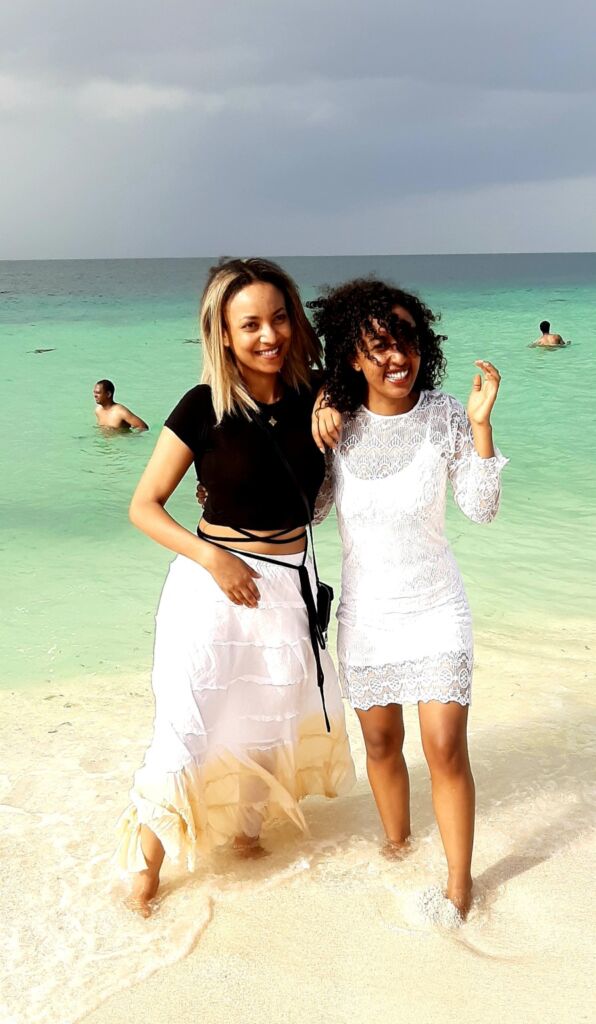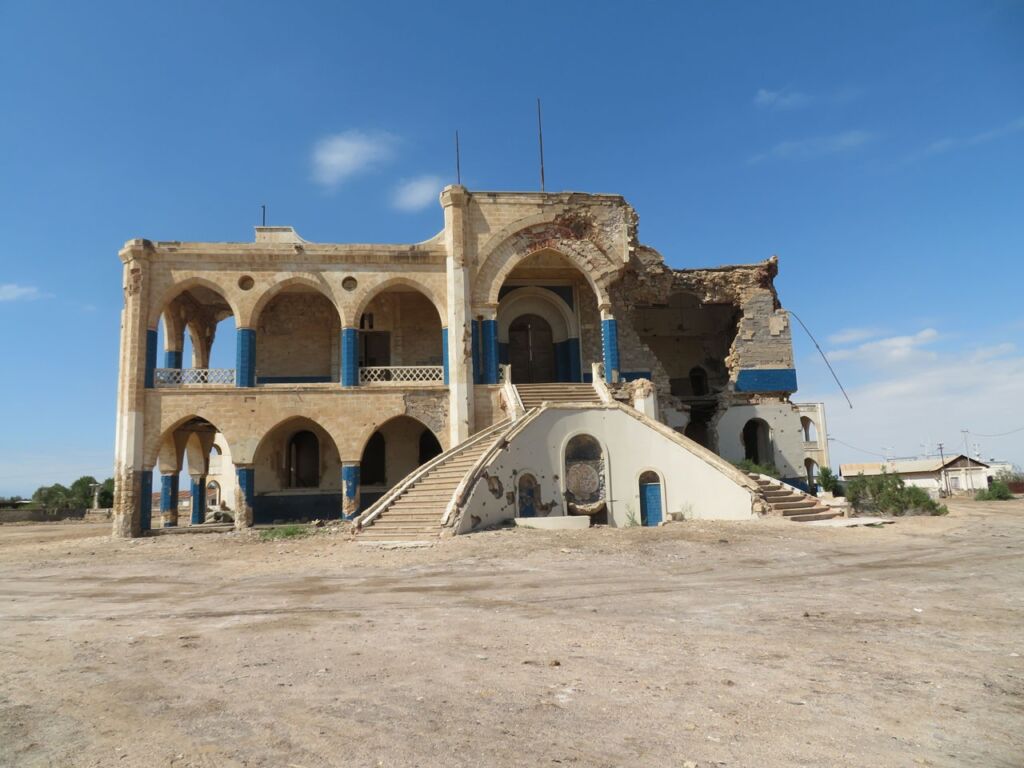Massawa, also spelled Massaua, Massauwa, Mitsiwa or Mussuwa, is a medium-sized city in Eritrea. It is a port city on the Red Sea, with about 38,000 inhabitants. Until 1897, Massawa was the capital of the Italian Eritrea colony. Then the honor fell to Asmara. Massawa is the second largest city in Eritrea, the largest port city and capital of the Semenawi Keyih Bahri district.
The city is located about 2 meters above sea level on two islands (Massawa and Taulud) off the coast and on the mainland. The historic center of Massawa is located on the outermost of these two islands, a 1000 m long, 300 m wide coral island. This island is connected by a 440 m long dam to the second island of Taulud, which was uninhabited until the 19th century. Taulud in turn is connected to the mainland by a 1030 m long second dam.
Massawa has a warm desert climate with extremely high humidity in summer, but little rainfall, averaging about 180mm of precipitation per year. It is very warm day and night all year round. The average annual temperature approaches 30°C and is one of the highest in the world. The relative humidity is very high due to the combination of desert heat and moisture from the Red Sea. Massawa is one of the hottest cities on the planet, so it’s important to plan your visit well and avoid the hottest period.
Massawa was originally a small seaside town about 50 km north of the port of Adulis in an area that in ancient times coincided with the Kingdom of Aksum. After the fall of Axum in the 8th century, Massawa was occupied from 740 to the 14th century by the Beja, (Beja Kingdom of Eritrea), but Massawa, which lay between the sultanates of Dahlak, Qata and Baqulin, fell from time to time among other Eritrean kingdoms (the Balaw Kingdom, (12th-15th century) and the Midri-Bahri Kingdom (14th-19th century)). Under the Balaw Kingdom, the oldest mosque in Eritrea, the Sheikh Hanafi Mosque, was built on Massawa Island.
In the 15th century Venetian traders lived in Massawa, which was then important as a port for the Arab slave trade for slaves from other countries in Asia and Africa.
From 1557 to 1846 century, Massawa almost fell under the Ottoman Empire. The former Balaw kings had expressed their desire to rule part of the area as “Na’ib” to the Sultan. In 1846, Massawa was almost handed over to the Egyptians and therefore did not become part of the Kedivate of Egypt. After the Ethiopian-Egyptian War of 1876, the British occupied the Kediva in 1882, who handed over the city to Italy in 1885. From 1890 to 1936 it was the capital of the Italian colony of Eritrea.
Because of the different colonisers the city has known, we find Portuguese, Arab, British, Italian and Turkish remnants in the City of Islands. The city used to be a cultural hub which drew artists and intellectuals and was once the most important city under the Italian rulers who connected Massawa to Asmara by railroad. We still find a lot of Ottoman influences in the city, especially on the architecture as well as several buildings and structures which were developed by their successors, the Egyptians and finally a lot of beautiful Italian houses.
The most interesting buildings are the Imperial Palace, the Cathedral, the Banco d’Italia, the Shrine of Sahaba, the Sheikh Hanafi Mosque, the coral houses in the old town, the bazaar and the Ottoman buildings.
For this tour we’ll leave early in the morning and we’ll be in Massawa all day long showing you around the old town, the most notable buildings as well as the coastline. We’ll also show you a good place to have lunch.
We offer a budget tour by local transport and a private tour by car. The advantage of going by car is that we’ll arrive fast while going by bus may make us lose several hours.
Includes:
– Transport: private or public
– Professional local English/Italian speaking guide
– Full city tour of Massawa with all entry fees paid for
Doesn’t include:
– Meals and drinks.















